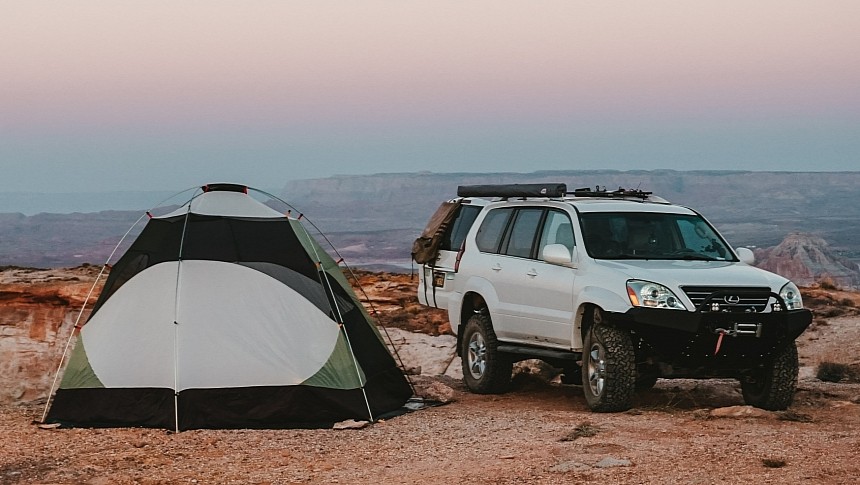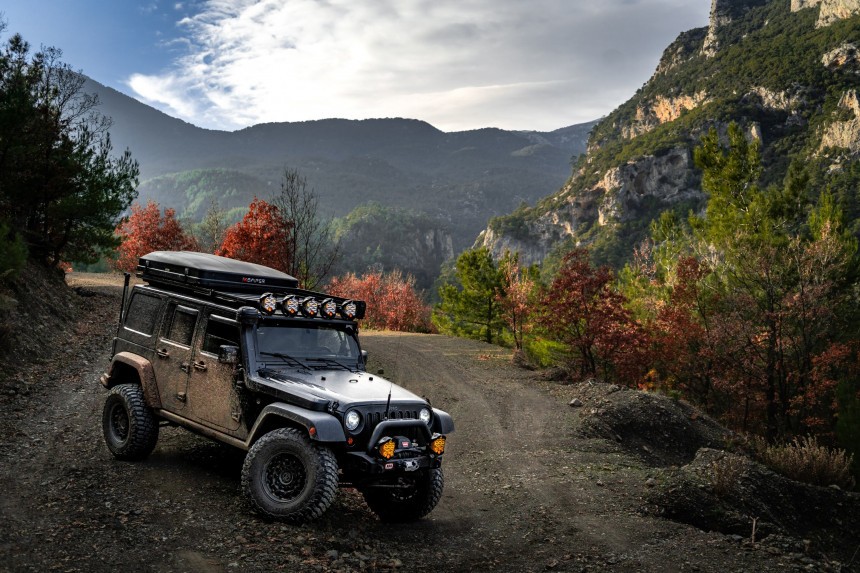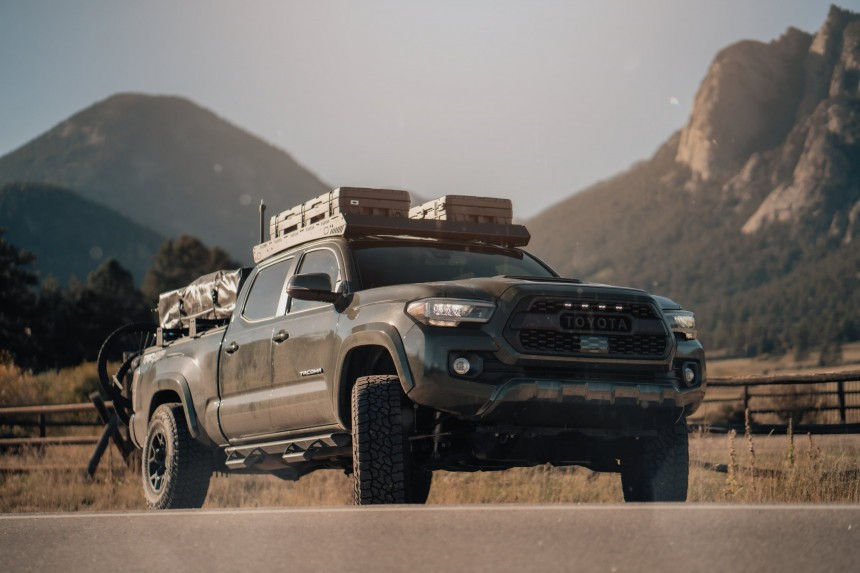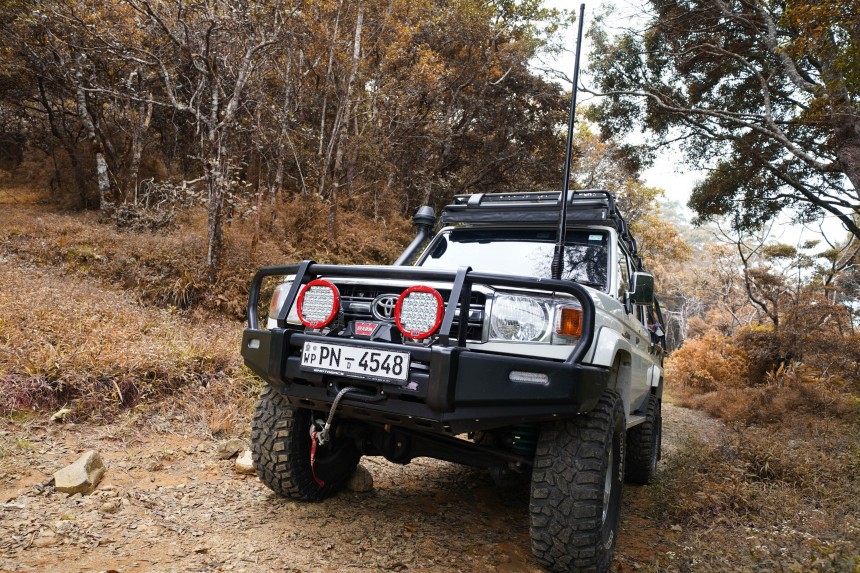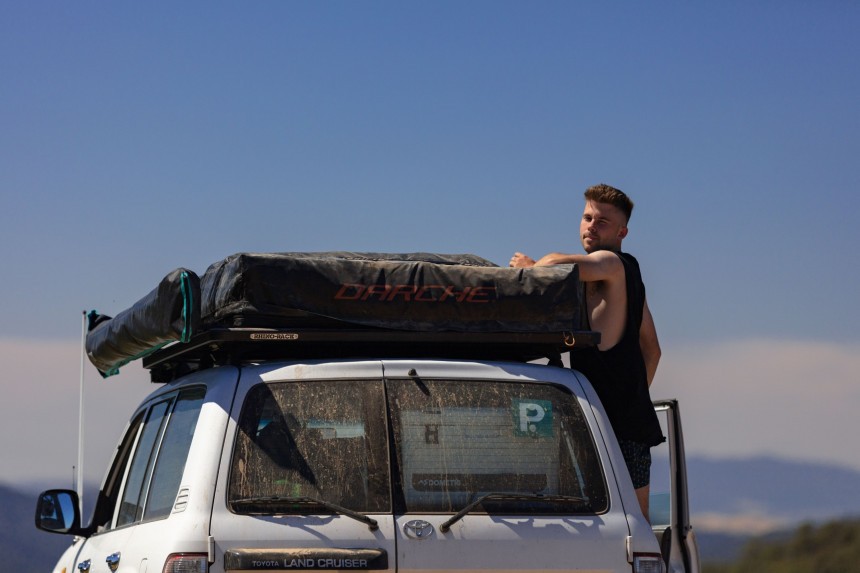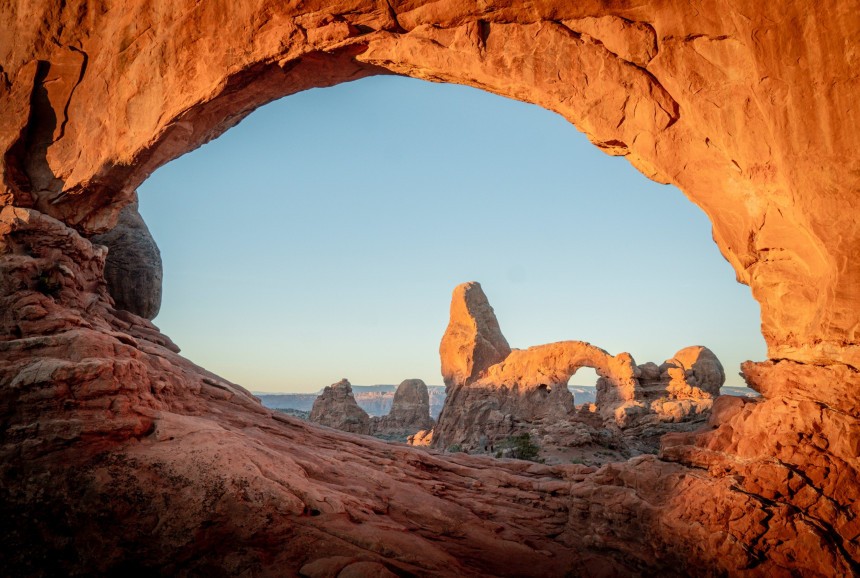So, you're thinking about starting to overland. Or at least you're curious about what it's all about since you're here, reading this article. Today, I'll go in-depth about the ins and outs of overlanding and how you can enjoy a safe and fulfilling trip.
First, let's see where and when this term first popped up. It's universally agreed that overlanding originated in Australia in the mid-1900s. It was used to describe the herding of livestock across great distances, either to transport it elsewhere or to discover new grazing ground.
Meanwhile, the meaning has slightly shifted – if we were to use a single definition, we could say it's "a long-term, vehicle-supported, long-distance travel to remote locations where the journey is the main goal, and the primary form of lodging is camping."
For instance, you can go off-road in your local environment, on an empty patch of land, but that definitely won't count as overlanding. Besides off-road travel, overlanding entails exploring far-off, remote places, typically for longer times, even weeks or months. That, of course, means you'll have to set up camp.
This experience is all about pushing your limits, both mentally and physically. It's an exciting adventure that leads you into the unknown, visiting places where not many people have ever gone to.
Of course, overlanding is not for everybody. You need an adventurous spirit and the desire to immerse yourself in nature. What's more, if you're used to staying in five-star hotels and accommodations, you might have a hard time getting used to the conditions of overlanding, which typically involve compact spaces and not-so-comfortable conditions.
That brings me to the next point – overlanding is not all smooth sailing. There are countless hardships you might encounter, but it's all about how you'll deal with them. You'll face unfriendly road conditions, to say the least, and you'll have to get creative on overcoming certain obstacles.
These conditions can also wear down your vehicle, so you must prepare for malfunctions and repairs. Moreover, civilization will probably be far away, so it can be a lonely experience, especially if you adventure solo. That also means that getting help can take a long time, so it's even more important to be ready for emergencies.
One of the critical steps to starting your overlanding journey is choosing an appropriate vehicle. There are several types you could go for, such as camper vans, trucks, SUVs, and even motorcycles.
There are many factors to consider when selecting your overlander. One of them is size – to determine how much real estate you require, you'll need to figure out how many passengers you'll have on board, the type of terrain you'll be driving on, and the amount of storage you prefer.
Needless to say, the best bet is to opt for a 4x4 vehicle, regardless of the type. Since you'll be off-roading most of the time, you need a machine that can endure the stresses and have enough power and traction to pull through.
Other factors include payload, footprint, reliability, fuel economy, power output, customization, and more. If you want to learn more about choosing the right overlanding vehicle, check out my previous article, where I thoroughly explained what points you'll have to take into account. There, you'll also find some suggestions regarding new vehicles that could be an excellent fit for overlanding.
So, you found the perfect base vehicle. Next, you'll have to decide on the accessories and upgrades that will turn it into the ultimate overlander. There are countless add-ons you could go for, but let me tell you about the ones that will make the most significant differences.
The first modifications worth exploring are for the wheels and tires. The wider you get, the more traction you'll have. Furthermore, you can opt for fully off-road dedicated tires, but keep in mind that they're not suitable for on-road use.
Having superior suspension will make overlanding much easier. It all depends on the terrain you'll be driving on. When tackling light off-roading, the stock suspension will probably do the job. But a suspension upgrade is necessary if you plan on rock crawling or adventuring on rugged trails. Take into account that the more stuff you bring along, the heavier the vehicle will get – this is another reason why a suspension upgrade might prove helpful.
Other changes you should consider are additional fuel tanks, body armor, such as skid plates, storage features, and camping gear that will enable you to live comfortably while overlanding. There's much to say about each of these - if you want to learn more, check out my previous article on the modifications that take your overlander to the next level.
When preparing for any excursion, overlanding included, packing is extremely important. Of course, packing food, water, clothing, and toiletries is a given, but let me tell you about other items that will make your trip successful. Of course, they can differ depending on the duration and location of your journey.
As I mentioned earlier, it would take a miracle for you to encounter no issues on your overlanding journey. And I'm not talking about full-on problems but rather minor issues that can be fixed, provided you have the right tools and supplies.
Your list should include a flashlight, a crowbar, a lantern, super glue, a tool kit with screwdrivers, scissors, wrenches, and more, some duct tape, gloves, and, of course, some WD40. A flat tire is one of the more common complications you might run into. You can prepare for it by packing a tire repair kit, gauge, and a portable air compressor.
Next, don't forget about the recovery gear that will help you escape sticky situations. This includes equipment such as a winch, recovery straps, a shovel, a kick, an extension rope, D shackles, and traction boards.
Having the proper gear to orientate yourself in the wilderness is crucial. Consider packing a radio, walkie-talkies (especially if you go overlanding as a group), a cell signal booster, such as the popular WeBoost, and a GPS. It wouldn't hurt also to have an internet connection – that's where the StarLink will come in useful.
Regarding food and cooking, try not to go too crazy and stick with the essentials, as you don't want to take up too much space. For instance, you could pack a camping stove, canned food, a cooler/refrigerator, utensils, plates and bowls, cutlery, and coffee. Some other notable mentions would be wine or beer openers and a water purification kit in case you run out of drinking water.
Another aspect to consider is making sure you have the appropriate power systems on board. A proper overlander will have a power supply such as a generator or batteries, solar panes, extra fuel cans, and propane bottles.
There are several options you could go for regarding camping and sleeping. For instance, you can add a rooftop or ground tent and an awning to your vehicle. Other essentials include pillows, portable chairs, a foldable table, a fan, and a sleeping bag. I won't go into what clothes to bring, as it depends on where you're going,
And lastly, as I said before, prepare for emergencies – pack a first aid kit, some medicine, a fire extinguisher, a thermal blanket, and a spill kit.
These are just part of the items you should bring on your trip, but I covered most of the essentials. There are many more I could've added, but I didn't want to make the list too long.
First off, you'll have to plan your route and add waypoints, campsites, fuel stops, and other points of interest. This is how you'll determine the amount of fuel you need, also taking into account the vehicle's fuel efficiency.
Next, make sure you research trail information and conditions. If you can't find the info online, you can reach out to local authorities. Moreover, you should check weather forecasts and make sure to pack accordingly.
Ensure you have the appropriate licenses and permits if your trip involves international travel. What's more, make sure your passport and visa (if required) are up to date.
Suppose you have unsolved questions regarding overlanding and can't find any article or source to help you figure it out. In that case, you can ask an online community like the Overland Bound Forum or the Overlanding Subreddit. Fellow overlanders will be eager to share valuable knowledge and experiences. You can also keep an eye out for any overlanding workshops or group trail rides in your region and network with like-minded enthusiasts.
There are many iconic overlanding routes across the entire globe. If you want to start in the United States, you'll find many options for adventuring. For instance, the West Coast offers various scenic trails, such as California's Mojave Desert, Arizona's Grand Canyon, and Utah's Arches National Park.
If you prefer the East Coast, you can hit the trails in the Appalachian Mountains, the coastal landscapes of Florida, or North Carolina's Outer Banks. There are plenty of other places to overland across the US, such as the Ozark National Forest in Arkansas or Michigan's Silver Lake State Park.
If you're more interested in international travel, many routes are available. Some of the most popular ones are the Trans-Africa route (from Cairo, Egypt, to Cape Town, South Africa), and the Silk Route (from Istanbul, Turkey to Xi'an, China).
First, stick to the designated roads and trails when overlanding. Moreover, when encountering obstacles, try driving over them, not around them, to avoid widening the trail. Whatever vehicle you use, do not wreak havoc on the paths you're using.
Respect others, whether it's other overlanders or any people you might encounter on your journey. That includes not crossing private property without asking permission beforehand. Moreover, when crossing paths with animals, you should keep your distance and proceed with caution to avoid spooking them.
As I mentioned earlier, preparation is vital. Always plan your route, learn how to use all your equipment safely, and prepare for the unexpected. Besides ensuring your vehicle is mechanically sound, bring all the tools, supplies, and spares you'll need for roadside repairs – it's better to be safe than sorry.
Traveling with a group can not only be more fun, but it can also be safer - you can help each other out in case of any issues. However, if you're keen on overlanding solo, tell others about your travel plans.
And lastly, be mindful and respectful of the environment. Don't overland on sensitive habitats, such as seasonal nesting or breeding areas, historical sites, or designated wilderness areas. Furthermore, try leaving the environment as you found it or, even better, by properly disposing of waste, picking up trash, and minimizing the use of fire.
And lastly, remember to enjoy the experience, from building your dream rig to hitting the trails. It's all about having fun, pushing your own limits, and growing. Hopefully, this article has shined some light on what it takes to start overlanding.
Meanwhile, the meaning has slightly shifted – if we were to use a single definition, we could say it's "a long-term, vehicle-supported, long-distance travel to remote locations where the journey is the main goal, and the primary form of lodging is camping."
Overlanding vs Off-Roading
It's easy to confuse these two terms – even though they're similar in some ways, there are some clear differences. Off-roading means driving off the beaten path, either for fun or out of necessity. Although overlanding involves off-roading, off-roading doesn't necessarily include overlanding.For instance, you can go off-road in your local environment, on an empty patch of land, but that definitely won't count as overlanding. Besides off-road travel, overlanding entails exploring far-off, remote places, typically for longer times, even weeks or months. That, of course, means you'll have to set up camp.
Why should you or shouldn't you go overlanding?
Of course, overlanding is not for everybody. You need an adventurous spirit and the desire to immerse yourself in nature. What's more, if you're used to staying in five-star hotels and accommodations, you might have a hard time getting used to the conditions of overlanding, which typically involve compact spaces and not-so-comfortable conditions.
That brings me to the next point – overlanding is not all smooth sailing. There are countless hardships you might encounter, but it's all about how you'll deal with them. You'll face unfriendly road conditions, to say the least, and you'll have to get creative on overcoming certain obstacles.
These conditions can also wear down your vehicle, so you must prepare for malfunctions and repairs. Moreover, civilization will probably be far away, so it can be a lonely experience, especially if you adventure solo. That also means that getting help can take a long time, so it's even more important to be ready for emergencies.
Overlanding Vehicles
There are many factors to consider when selecting your overlander. One of them is size – to determine how much real estate you require, you'll need to figure out how many passengers you'll have on board, the type of terrain you'll be driving on, and the amount of storage you prefer.
Needless to say, the best bet is to opt for a 4x4 vehicle, regardless of the type. Since you'll be off-roading most of the time, you need a machine that can endure the stresses and have enough power and traction to pull through.
Other factors include payload, footprint, reliability, fuel economy, power output, customization, and more. If you want to learn more about choosing the right overlanding vehicle, check out my previous article, where I thoroughly explained what points you'll have to take into account. There, you'll also find some suggestions regarding new vehicles that could be an excellent fit for overlanding.
Gear, Equipment, and Upgrades
The first modifications worth exploring are for the wheels and tires. The wider you get, the more traction you'll have. Furthermore, you can opt for fully off-road dedicated tires, but keep in mind that they're not suitable for on-road use.
Having superior suspension will make overlanding much easier. It all depends on the terrain you'll be driving on. When tackling light off-roading, the stock suspension will probably do the job. But a suspension upgrade is necessary if you plan on rock crawling or adventuring on rugged trails. Take into account that the more stuff you bring along, the heavier the vehicle will get – this is another reason why a suspension upgrade might prove helpful.
Other changes you should consider are additional fuel tanks, body armor, such as skid plates, storage features, and camping gear that will enable you to live comfortably while overlanding. There's much to say about each of these - if you want to learn more, check out my previous article on the modifications that take your overlander to the next level.
What to Pack
As I mentioned earlier, it would take a miracle for you to encounter no issues on your overlanding journey. And I'm not talking about full-on problems but rather minor issues that can be fixed, provided you have the right tools and supplies.
Your list should include a flashlight, a crowbar, a lantern, super glue, a tool kit with screwdrivers, scissors, wrenches, and more, some duct tape, gloves, and, of course, some WD40. A flat tire is one of the more common complications you might run into. You can prepare for it by packing a tire repair kit, gauge, and a portable air compressor.
Next, don't forget about the recovery gear that will help you escape sticky situations. This includes equipment such as a winch, recovery straps, a shovel, a kick, an extension rope, D shackles, and traction boards.
Having the proper gear to orientate yourself in the wilderness is crucial. Consider packing a radio, walkie-talkies (especially if you go overlanding as a group), a cell signal booster, such as the popular WeBoost, and a GPS. It wouldn't hurt also to have an internet connection – that's where the StarLink will come in useful.
Regarding food and cooking, try not to go too crazy and stick with the essentials, as you don't want to take up too much space. For instance, you could pack a camping stove, canned food, a cooler/refrigerator, utensils, plates and bowls, cutlery, and coffee. Some other notable mentions would be wine or beer openers and a water purification kit in case you run out of drinking water.
Another aspect to consider is making sure you have the appropriate power systems on board. A proper overlander will have a power supply such as a generator or batteries, solar panes, extra fuel cans, and propane bottles.
There are several options you could go for regarding camping and sleeping. For instance, you can add a rooftop or ground tent and an awning to your vehicle. Other essentials include pillows, portable chairs, a foldable table, a fan, and a sleeping bag. I won't go into what clothes to bring, as it depends on where you're going,
And lastly, as I said before, prepare for emergencies – pack a first aid kit, some medicine, a fire extinguisher, a thermal blanket, and a spill kit.
These are just part of the items you should bring on your trip, but I covered most of the essentials. There are many more I could've added, but I didn't want to make the list too long.
Planning Your Journey
Besides the right vehicle and gear, a good plan is the key to a successful trip. You're already on the right path, as you're here now reading this article. But besides checking out a stranger's advice on the internet, what else can you do?First off, you'll have to plan your route and add waypoints, campsites, fuel stops, and other points of interest. This is how you'll determine the amount of fuel you need, also taking into account the vehicle's fuel efficiency.
Next, make sure you research trail information and conditions. If you can't find the info online, you can reach out to local authorities. Moreover, you should check weather forecasts and make sure to pack accordingly.
Ensure you have the appropriate licenses and permits if your trip involves international travel. What's more, make sure your passport and visa (if required) are up to date.
Suppose you have unsolved questions regarding overlanding and can't find any article or source to help you figure it out. In that case, you can ask an online community like the Overland Bound Forum or the Overlanding Subreddit. Fellow overlanders will be eager to share valuable knowledge and experiences. You can also keep an eye out for any overlanding workshops or group trail rides in your region and network with like-minded enthusiasts.
Overlanding Destinations
If you prefer the East Coast, you can hit the trails in the Appalachian Mountains, the coastal landscapes of Florida, or North Carolina's Outer Banks. There are plenty of other places to overland across the US, such as the Ozark National Forest in Arkansas or Michigan's Silver Lake State Park.
If you're more interested in international travel, many routes are available. Some of the most popular ones are the Trans-Africa route (from Cairo, Egypt, to Cape Town, South Africa), and the Silk Route (from Istanbul, Turkey to Xi'an, China).
Overlanding Etiquette
Before I end this article, I wanted to touch upon tips and tricks for responsible overlanding. Some of them might sound like common sense, but you must be aware of the dos and don'ts of overlanding.First, stick to the designated roads and trails when overlanding. Moreover, when encountering obstacles, try driving over them, not around them, to avoid widening the trail. Whatever vehicle you use, do not wreak havoc on the paths you're using.
Respect others, whether it's other overlanders or any people you might encounter on your journey. That includes not crossing private property without asking permission beforehand. Moreover, when crossing paths with animals, you should keep your distance and proceed with caution to avoid spooking them.
As I mentioned earlier, preparation is vital. Always plan your route, learn how to use all your equipment safely, and prepare for the unexpected. Besides ensuring your vehicle is mechanically sound, bring all the tools, supplies, and spares you'll need for roadside repairs – it's better to be safe than sorry.
Traveling with a group can not only be more fun, but it can also be safer - you can help each other out in case of any issues. However, if you're keen on overlanding solo, tell others about your travel plans.
And lastly, be mindful and respectful of the environment. Don't overland on sensitive habitats, such as seasonal nesting or breeding areas, historical sites, or designated wilderness areas. Furthermore, try leaving the environment as you found it or, even better, by properly disposing of waste, picking up trash, and minimizing the use of fire.
Conclusion
Overlanding can be a fulfilling experience if you prepare for it correctly. Besides choosing a proper vehicle and suitable upgrades, try educating yourself as much as possible. But theory can only go so far. If possible, try practicing in your local environment – that's how you'll figure out what works for you.And lastly, remember to enjoy the experience, from building your dream rig to hitting the trails. It's all about having fun, pushing your own limits, and growing. Hopefully, this article has shined some light on what it takes to start overlanding.
